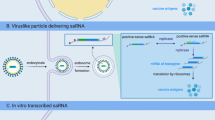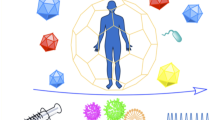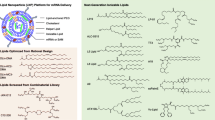Abstract
The gastric bacterial pathogen Helicobacter pylori persistently colonizes the gastric mucosa of humans and plays a critical role in the development of gastritis, peptic ulceration and gastric adenocarcinoma. Consequently, the eradication of H. pylori might contribute to the prevention of H. pylori-associated gastric diseases. In this study, a multi-epitope vaccine CTB-UE (CUE) was displayed on the surface of non-genetically modified Lactococcus lactis particles (GEM) to enhance immunogenicity. This particulate vaccine CUE-GEM induced serum and mucosal specific antibody responses against native H. pylori urease and provided potent protection to eliminate H. pylori colonization and relieve gastritis in an H. pylori-infected BALB/c mouse model. The immuno-protective mechanisms are highly associated with CD4+ Th cell-mediated and humoral immunity, especially local immunity. There might be two main aspects of this association. One aspect is related to the suppression of urease activity by promotion of the production of specific mucosal neutralizing antibody. The other aspect is correlated with alleviating gastritis by regulating the gastric pro-inflammatory cytokine profile, especially IFN-γ and IL-17. These results demonstrated that conjugating antigen vaccines with GEM particles could lead to promising oral therapeutic vaccine formulations against H. pylori infection.







Similar content being viewed by others
References
Bagnoli F, Fontana MR, Soldaini E, Mishra RP, Fiaschi L, Cartocci E, Nardi-Dei V, Ruggiero P, Nosari S, De Falco MG, Lofano G, Marchi S, Galletti B, Mariotti P, Bacconi M, Torre A, Maccari S, Scarselli M, Rinaudo CD, Inoshima N, Savino S, Mori E, Rossi-Paccani S, Baudner B, Pallaoro M, Swennen E, Petracca R, Brettoni C, Liberatori S, Norais N, Monaci E, Bubeck Wardenburg J, Schneewind O, O’Hagan DT, Valiante NM, Bensi G, Bertholet S, De Gregorio E, Rappuoli R, Grandi G (2015) Vaccine composition formulated with a novel TLR7-dependent adjuvant induces high and broad protection against Staphylococcus aureus. Proc Natl Acad Sci USA 112(12):3680–3685 doi:10.1073/pnas.1424924112
Blanchard TG, Czinn SJ, Redline RW, Sigmund N, Harriman G, Nedrud JG (1999) Antibody-independent protective mucosal immunity to gastric helicobacter infection in mice. Cell Immunol 191(1):74–80. doi:10.1006/cimm.1998.1421
Bosma T, Kanninga R, Neef J, Audouy SA, van Roosmalen ML, Steen A, Buist G, Kok J, Kuipers OP, Robillard G, Leenhouts K (2006) Novel surface display system for proteins on non-genetically modified Gram-positive bacteria. Appl Environ Microbiol 72(1):880–889. doi:10.1128/AEM.72.1.880-889.2006
Boyanova L, Mentis A, Gubina M, Rozynek E, Gosciniak G, Kalenic S, Goral V, Kupcinskas L, Kantarceken B, Aydin A, Archimandritis A, Dzierzanowska D, Vcev A, Ivanova K, Marina M, Mitov I, Petrov P, Ozden A, Popova M (2002) The status of antimicrobial resistance of Helicobacter pylori in eastern Europe. Clin Microbiol Infect 8(7):388–396
D’Elios MM, Manghetti M, De Carli M, Costa F, Baldari CT, Burroni D, Telford JL, Romagnani S, Del Prete G (1997) T helper 1 effector cells specific for Helicobacter pylori in the gastric antrum of patients with peptic ulcer disease. J Immunol 158(2):962–967
DeLyria ES, Nedrud JG, Ernst PB, Alam MS, Redline RW, Ding H, Czinn SJ, Xu J, Blanchard TG (2011) Vaccine-induced immunity against Helicobacter pylori in the absence of IL-17A. Helicobacter 16(3):169–178. doi:10.1111/j.1523-5378.2011.00839.x
Eaton KA, Mefford M, Thevenot T (2001) The role of T cell subsets and cytokines in the pathogenesis of Helicobacter pylori gastritis in mice. J Immunol 166(12):7456–7461
Ermak TH, Giannasca PJ, Nichols R, Myers GA, Nedrud J, Weltzin R, Lee CK, Kleanthous H, Monath TP (1998) Immunization of mice with urease vaccine affords protection against Helicobacter pylori infection in the absence of antibodies and is mediated by MHC class II-restricted responses. J Exp Med 188(12):2277–2288
Ferrero RL, Thiberge JM, Huerre M, Labigne A (1998) Immune responses of specific-pathogen-free mice to chronic Helicobacter pylori (strain SS1) infection. Infect Immun 66(4):1349–1355
Gomez-Duarte OG, Lucas B, Yan ZX, Panthel K, Haas R, Meyer TF (1998) Protection of mice against gastric colonization by Helicobacter pylori by single oral dose immunization with attenuated Salmonella typhimurium producing urease subunits A and B. Vaccine 16(5):460–471
Guo L, Li X, Tang F, He Y, Xing Y, Deng X, Xi T (2012a) Immunological features and the ability of inhibitory effects on enzymatic activity of an epitope vaccine composed of cholera toxin B subunit and B cell epitope from Helicobacter pylori urease A subunit. Appl Microbiol Biotechnol 93(5):1937–1945. doi:10.1007/s00253-011-3726-0
Guo L, Liu K, Xu G, Li X, Tu J, Tang F, Xing Y, Xi T (2012b) Prophylactic and therapeutic efficacy of the epitope vaccine CTB-UA against Helicobacter pylori infection in a BALB/c mice model. Appl Microbiol Biotechnol 95(6):1437–1444. doi:10.1007/s00253-012-4122-0
Guo L, Yin R, Liu K, Lv X, Li Y, Duan X, Chu Y, Xi T, Xing Y (2014) Immunological features and efficacy of a multi-epitope vaccine CTB-UE against H. pylori in BALB/c mice model. Appl Microbiol Biotechnol 98(8):3495–3507. doi:10.1007/s00253-013-5408-6
Hessle CC, Andersson B, Wold AE (2005) Gram-positive and Gram-negative bacteria elicit different patterns of pro-inflammatory cytokines in human monocytes. Cytokine 30(6):311–318. doi:10.1016/j.cyto.2004.05.008
Lee A, O’Rourke J, De Ungria MC, Robertson B, Daskalopoulos G, Dixon MF (1997) A standardized mouse model of Helicobacter pylori infection: introducing the Sydney strain. Gastroenterology 112(4):1386–1397
Li X, Xing Y, Guo L, Lv X, Song H, Xi T (2014) Oral immunization with recombinant Lactococcus lactis delivering a multi-epitope antigen CTB-UE attenuates Helicobacter pylori infection in mice. Pathog Dis 72(1):78–86. doi:10.1111/2049-632X.12173
Lv X, Song H, Yang J, Li T, Xi T, Xing Y (2014a) A multi-epitope vaccine CTB-UE relieves Helicobacter pylori-induced gastric inflammatory reaction via up-regulating microRNA-155 to inhibit Th17 response in C57/BL6 mice model. Hum Vaccin Immunother 10(12):3561–3569. doi:10.4161/hv.36096
Lv X, Yang J, Song H, Li T, Guo L, Xing Y, Xi T (2014b) Therapeutic efficacy of the multi-epitope vaccine CTB-UE against Helicobacter pylori infection in a Mongolian gerbil model and its microRNA-155-associated immuno-protective mechanism. Vaccine 32(41):5343–5352. doi:10.1016/j.vaccine.2014.07.041
Mohammadi M, Nedrud J, Redline R, Lycke N, Czinn SJ (1997) Murine CD4 T-cell response to Helicobacter infection: TH1 cells enhance gastritis and TH2 cells reduce bacterial load. Gastroenterology 113(6):1848–1857
Nagata K, Mizuta T, Tonokatu Y, Fukuda Y, Okamura H, Hayashi T, Shimoyama T, Tamura T (1992) Monoclonal antibodies against the native urease of Helicobacter pylori: synergistic inhibition of urease activity by monoclonal antibody combinations. Infect Immun 60(11):4826–4831
Nystrom J, Raghavan S, Svennerholm AM (2006) Mucosal immune responses are related to reduction of bacterial colonization in the stomach after therapeutic Helicobacter pylori immunization in mice. Microbes Infect 8(2):442–449. doi:10.1016/j.micinf.2005.07.010
Qiu Y, Wang YC, Tao HX, Zhan DW, Yuan SL, Wang P, Wang LC, Han XP, Li CS, Li JK, Liu CJ (2010) Identification of B-cell epitopes in urease B subunit of Helicobacter pylori bound by neutralizing antibodies. Vaccine 28(32):5220–5227. doi:10.1016/j.vaccine.2010.05.067
Ramirez K, Ditamo Y, Rodriguez L, Picking WL, van Roosmalen ML, Leenhouts K, Pasetti MF (2010) Neonatal mucosal immunization with a non-living, non-genetically modified Lactococcus lactis vaccine carrier induces systemic and local Th1-type immunity and protects against lethal bacterial infection. Mucosal Immunol 3(2):159–171. doi:10.1038/mi.2009.131
Saluja V, Visser MR, van Roosmalen ML, Leenhouts K, Huckriede A, Hinrichs WL, Frijlink HW (2010) Gastro-intestinal delivery of influenza subunit vaccine formulation adjuvanted with Gram-positive enhancer matrix (GEM) particles. Eur J Pharm Biopharm 76(3):470–474. doi:10.1016/j.ejpb.2010.08.003
Sayi A, Kohler E, Hitzler I, Arnold I, Schwendener R, Rehrauer H, Muller A (2009) The CD4+ T cell-mediated IFN-gamma response to Helicobacter infection is essential for clearance and determines gastric cancer risk. J Immunol 182(11):7085–7101. doi:10.4049/jimmunol.0803293
Shi Y, Liu XF, Zhuang Y, Zhang JY, Liu T, Yin Z, Wu C, Mao XH, Jia KR, Wang FJ, Guo H, Flavell RA, Zhao Z, Liu KY, Xiao B, Guo Y, Zhang WJ, Zhou WY, Guo G, Zou QM (2010) Helicobacter pylori-induced Th17 responses modulate Th1 cell responses, benefit bacterial growth, and contribute to pathology in mice. J Immunol 184(9):5121–5129. doi:10.4049/jimmunol.0901115
Song H, Lv X, Yang J, Liu W, Yang H, Xi T, Xing Y (2015) A novel chimeric flagellum fused with the multi-epitope vaccine CTB-UE prevents Helicobacter pylori-induced gastric cancer in a BALB/c mouse model. Appl Microbiol Biotechnol. doi:10.1007/s00253-015-6705-z
Uemura N, Okamoto S, Yamamoto S, Matsumura N, Yamaguchi S, Yamakido M, Taniyama K, Sasaki N, Schlemper RJ (2001) Helicobacter pylori infection and the development of gastric cancer. N Engl J Med 345(11):784–789. doi:10.1056/NEJMoa001999
van Roosmalen ML, Kanninga R, El Khattabi M, Neef J, Audouy S, Bosma T, Kuipers A, Post E, Steen A, Kok J, Buist G, Kuipers OP, Robillard G, Leenhouts K (2006) Mucosal vaccine delivery of antigens tightly bound to an adjuvant particle made from food-grade bacteria. Methods 38(2):144–149. doi:10.1016/j.ymeth.2005.09.015
Wroblewski LE, Peek RM Jr, Wilson KT (2010) Helicobacter pylori and gastric cancer: factors that modulate disease risk. Clin Microbiol Rev 23(4):713–739. doi:10.1128/CMR.00011-10
Xie C, Lu NH (2015) Review: clinical management of Helicobacter pylori infection in China. Helicobacter 20(1):1–10. doi:10.1111/hel.12178
Zeng M, Mao XH, Li JX, Tong WD, Wang B, Zhang YJ, Guo G, Zhao ZJ, Li L, Wu DL, Lu DS, Tan ZM, Liang HY, Wu C, Li DH, Luo P, Zeng H, Zhang WJ, Zhang JY, Guo BT, Zhu FC, Zou QM (2015) Efficacy, safety, and immunogenicity of an oral recombinant Helicobacter pylori vaccine in children in China: a randomised, double-blind, placebo-controlled, phase 3 trial. Lancet. doi:10.1016/S0140-6736(15)60310-5
Zhao W, Wu W, Xu X (2007) Oral vaccination with liposome-encapsulated recombinant fusion peptide of urease B epitope and cholera toxin B subunit affords prophylactic and therapeutic effects against H. pylori infection in BALB/c mice. Vaccine 25(44):7664–7673. doi:10.1016/j.vaccine.2007.08.034
Zhou WY, Shi Y, Wu C, Zhang WJ, Mao XH, Guo G, Li HX, Zou QM (2009) Therapeutic efficacy of a multi-epitope vaccine against Helicobacter pylori infection in BALB/c mice model. Vaccine 27(36):5013–5019. doi:10.1016/j.vaccine.2009.05.009
Acknowledgments
We thank Mr. Zhaohui Wang for his careful revision of this paper.
Author information
Authors and Affiliations
Corresponding authors
Ethics declarations
Funding
This work was supported by the National Major Special Program of New Drug Research and Development (No. 2012ZX09103301–008), the Natural Science Foundation of Jiangsu Province (No. BK20130647), the Priority Academic Program Development (PAPD) of Jiangsu Higher Education Institutions and Qing Lan Project, the National Natural Science Foundation of China (No. 81502970) and the Fundamental Research Funds for the Central Universities (No. 2015ZD004).
Conflict of interest
The authors declare that they have no competing interests.
Ethical approval
All animal experimental procedures were performed in accordance with guidelines of the Animal Ethical and Experimental Committee of China Pharmaceutical University.
Rights and permissions
About this article
Cite this article
Liu, W., Tan, Z., Xue, J. et al. Therapeutic efficacy of oral immunization with a non-genetically modified Lactococcus lactis-based vaccine CUE-GEM induces local immunity against Helicobacter pylori infection. Appl Microbiol Biotechnol 100, 6219–6229 (2016). https://doi.org/10.1007/s00253-016-7333-y
Received:
Revised:
Accepted:
Published:
Issue Date:
DOI: https://doi.org/10.1007/s00253-016-7333-y




